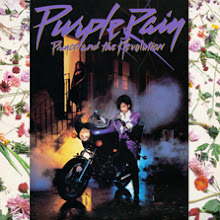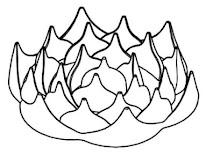TTABlog Test: Are Jewelry and Clothing Related to Drinking Vessels and Tableware for Section 2(d) Purposes?
The USPTO refused to register the mark ZTA for jewelry and clothing, finding confusion likely with the identical mark, registered for, inter alia, mugs, cups, bottles, drinkware, and tableware. The fact that the marks are identical weighed "heavily" in favor of affirmance of the refusal. But what about the goods? How do you think this came out? In re Zeta Tau Alpha Sorority, Serial No. 90090117 (August 29, 2022) [not precedential] (Opinion by Judge Linda A. Kuczma). [On May 8 2024, the CAFC affirmed this decision in a per curiam order].
Of course, when the involved marks are identical, a lesser degree of similarity between the goods is necessary to support a Section 2(d) refusal. Moreover, the goods "do not have to be similar or competitive, or even offered through the same channels of trade, in order to find that there is a likelihood of confusion."
[E]ven if the goods in question are different from one another in kind, the same goods can be related in the mind of the consuming public as to the origin of the goods. It is this sense of relatedness that matters in the likelihood of confusion analysis. Recot, Inc. v. Becton, 214 F.3d 1322, 54 USPQ2d 1894, 1898 (Fed. Cir. 2000).
Examining Attorney Alberto I. Manca submitted website evidence showing that "fashion labels" (LILLY PULITZER, LIFE IS GOOD, KATE SPADE, SIMPLY SOUTHERN, VERA BRADLEY) and sororities (PI BET PHI, ALPHA DELTA PI) offer jewelry, clothing, drinking vessels, cups, and the like under their respective trademarks. "Therefore, customers familiar with Registrant’s goods may well expect that Applicant’s goods offered under an identical mark are related and would be provided by Registrant or vice versa i.e., that Registrant’s goods are provided by Applicant."
The Examining Attorney also submitted fifteen active, use-based third-party registrations for marks registered for use in connection with those same or similar goods.
The Board therefore found that the involved goods are related for Section 2(d) purposes.
While the goods offered under Applicant’s and Registrant’s identical marks are not identical or competitive, as noted, the record demonstrates more than enough of a relationship between them that they would be likely to be seen by the same consumers under circumstances that would lead them to believe that they originate from the same source.
Applicant argued that ZTA is an "affinity mark" like those commonly licensed by sororities, fraternities, and colleges "to multiple manufacturers to sponsor or endorse the production of official merchandise for members, alumni, supporters and so forth to acquire for the purpose of displaying the member, alumnus, or supporter’s ‘affinity’ for their respective fraternity, sorority, college or university." The Board agreed that "The licensing of commercial trademarks for use on “collateral” products, such as Applicant’s goods, which are unrelated in nature to the services on which its mark is normally used has become a common practice." However, it was unimpressed by the applicant's argument.
Aside from the fact that there is no evidence supporting different consumers for Applicant’s and Registrant’s goods, and given their relationship, and in the absence of any limitations as to classes of consumers in Applicant’s application, at least some of Applicant’s customers are part of the general consuming public for Registrant’s goods. As stated, to the extent that Applicant’s and Registrant’s goods are offered to the general consuming public, the channels of trade and classes of purchasers overlap.
And so, the Board affirmed the refusal.
Read comments and post your comment here.
TTABlogger comment: It appears that, by citing a number of "fashion labels," one can show most any consumer product to be related to clothing and jewelry.
Text Copyright John L. Welch 2022.






































